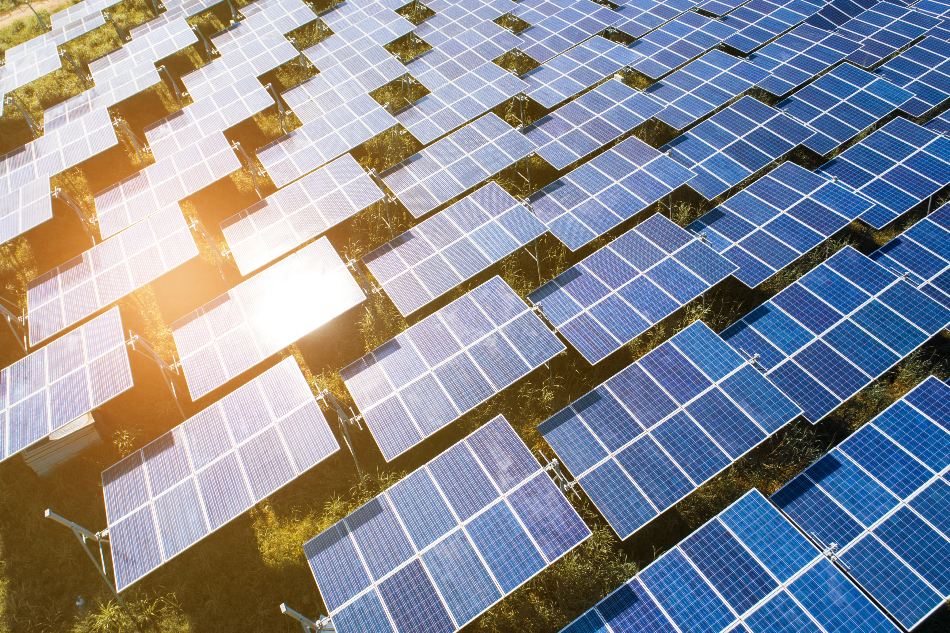Mar 30 2008

Image Credit: ThongsukAtiwannakul/Shutterstock.com
Article updated on 22/01/20 by Gaea Marelle Miranda
Photovoltaic cells, more commonly known as solar cells, are found in a variety of consumer and industrial applications such as calculators and satellites. Cells and devices that are photovoltaic convert light energy into electrical energy.
First used almost exclusively in space, photovoltaic cells are used more and more in day-to-day applications. Photovoltaic cells are available in many different shapes and sizes. When individual photovoltaic cells are joined, they form photovoltaic modules.
Special materials are used for the construction of photovoltaic cells. These materials are called semiconductors. The most commonly used semiconductor material for the construction of photovoltaic cells is silicon.
Several forms of silicon are used for the construction; they are single-crystalline, multi-crystalline, and amorphous. Other materials used for the construction of photovoltaic cells are polycrystalline thin films such as copper indium diselenide, cadmium telluride, and gallium arsenide.
Silicon - The Most Popular Material for Solar Cells
Several of the earliest photovoltaic (PV) devices have been manufactured using silicon as the solar cell material and it is still the most popular material for solar cells today. The molecular structure of single-crystal silicon is uniform.
This uniformity is ideal for the transfer of electrons efficiently through the material. However, to make an effective photovoltaic cell, silicon needs to be combined or merged with other elements.
- Multi-crystalline silicon is considered less efficient than single-crystal silicon. Devices made out of this silicon type, however, are less expensive to produce. Casting is the most common means of producing multi-crystalline silicon on a commercial scale.
- Amorphous silicon can absorb 40 times more solar radiation than single-crystal silicon. This is one of the reasons why amorphous silicon can reduce the cost of photovoltaics. Amorphous silicon can be coated on low-cost substrates such as plastics and glass. This makes amorphous silicon ideal for building-integrated photovoltaic products.
Polycrystalline Thin Films - Reducing Material Required in Solar Cells
Numerous thin-film technologies have been developed to decrease the amount of light-absorbing material required to produce solar cells. This could lead to a reduction in processing costs; however, it could also lead to a reduction in energy conversion efficiency. With the emergence of polycrystalline thin-film research, a cost-effective method of addressing solar cell requirements is realized.
Copper indium diselenide
Copper indium diselenide (CIS), has an extremely high absorptivity. This means that 99 percent of the light illuminated on CIS will be consumed in the first micrometer of the material. The addition of a small amount of gallium will improve the efficiency of the photovoltaic device. This is commonly referred to as copper indium gallium diselenide or CIGS photovoltaic cell.
Cadmium telluride
Cadmium telluride (CdTe) is another well-known polycrystalline thin-film material. Similar to copper indium diselenide, CdTe also has a very high absorptivity and can be produced using low-cost techniques. The properties of CdTe can be altered by the addition of alloying elements such as mercury and zinc.
Gallium arsenide
Gallium arsenide (GaAs) is a compound of two elements: gallium and arsenic. Gallium is rarer than gold and is a byproduct of the smelting of other metals, particularly aluminum and zinc. Arsenic, on the other hand, is not rare, however, it is poisonous. Gallium arsenide also has a very high absorptivity and it only requires a cell of a few microns thick to absorb sunlight. GaAs cells are unaffected by heat and are highly resistant to damage from radiation. This makes it suitable for concentrator systems and space applications.
Source:
AZoCleantech